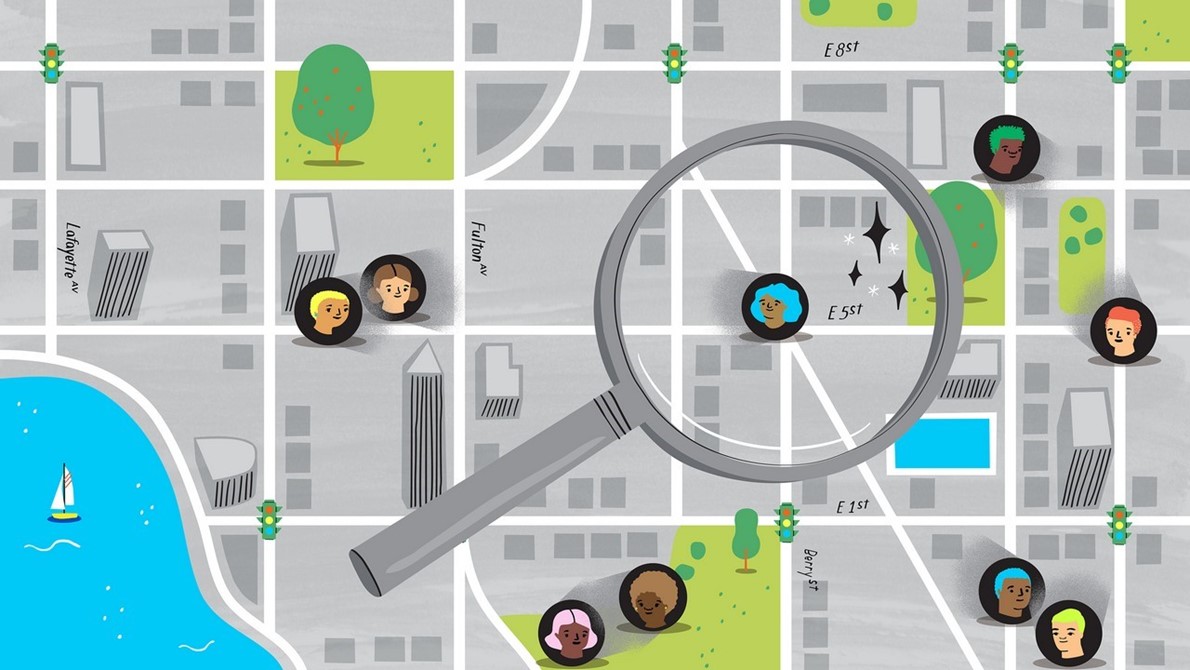In July, Shay Pierre opened
Apple’s
location-sharing app Find My and noticed a friend at an unfamiliar apartment
building in Fort Lauderdale, Florida.
اضافة اعلان
Pierre, 23, zoomed in to inspect the building, then
texted her friend its address, along with a joking “where are you?” Her friend
came clean. He had started dating somebody, and he was at her apartment. If
Find My had not given it away, Pierre would not have known about the relationship
until months later.
Her friend later relabeled the apartment building in
the app: “None of your business.”
As location sharing through apps like Find My has
proliferated in recent years, they have become a staple in some friendships —
ostensibly for safety but with the side effect of complicating dynamics between
friends.
The effect is particularly noticeable among
Generation Z and millennials, the first generations to come of age with the
possibility of knowing where their peers are at all times.
Location sharing is not new. In 2011, Apple released
Find My Friends. In 2013, 7 percent of US adults said they checked into
locations on social media or shared their locations with friends, according to
the Pew Research Center. This year, 69 percent of Gen Z and 77 percent of
millennials said they activated location-sharing features at least sometimes,
compared with 62 percent of
US adults in general, according to the Harris Poll.
But what can be startling — and harder to quantify —
is how widely younger people share their location information. Some say that
they track a dozen or more friends on the app, and that those friends track
them back.
These features are not limited to Find My. Dating,
food delivery, and ride-hailing apps often ask for access to location data.
Facebook’s Messenger,
Snapchat’s Snap Maps, and third-party apps like the
family-oriented Life360 — all available on iPhones and Android phones — offer
real-time location-sharing features.
And location sharing is built into some smartphones.
Starting in 2015, Find My Friends came automatically installed in iPhones. In
2019, it and Apple’s device-locating apps Find My iPhone and Find My Mac were
rolled into the stand-alone Find My.
Google Maps, which comes preinstalled in
Android phones, has a similar location-sharing feature.

As with a check-in on Facebook or location tagging
on Instagram and Twitter, users opt into location sharing on Find My. But
unlike those features, Find My shares real-time location after users opt in,
with the options to share for one hour, until the end of the day or
indefinitely.
With Find My, “you
aren’t actively choosing to do something as you reach a certain location
because you’re constantly sharing your location,” said Michael Saker, a senior
lecturer in digital sociology at City,
University of London. As a result,
“there’s an intimacy that’s intertwined with that act,” he added. “There’s a
verification of being friends.”
But sharing locations can come with privacy
concerns, especially if users are not aware of or do not consent to whom they
share their location with, and for how long, said Eva Galperin, cybersecurity
director at Electronic Frontier Foundation, a digital rights group. Even if
users consent at first, expectations among friends can make it more difficult
to opt-out, she said.
“People do this sort of indefinite data sharing
because it is normalized within their immediate family or friend group,” she
said. “No one has normalized pushing against that sharing.”
Asked for comment, a spokesperson for Apple referred
to a support page for Find My with instructions on how to start and stop
sharing locations.
For Jade Calvin-Nau, 24, Find My helps her remain
connected with friends. In college, the app was as much about safety as it was
about socializing. She and her friends checked it to make sure everybody got
home safe after a night out or to see whether they could meet up.
Olive Okoro, 19, uses Find My to fortify
friendships. She shares her location with about a dozen friends she most
trusts. Apple’s texting service, iMessage, tells users when somebody starts and
stops sharing locations with them, and vice versa.
The notification about starting is “a privilege,”
Okoro said. The one about stopping, though, “feels like a stab,” she said.
“It’s actually like, ‘You hate my guts.’”
This summer, when
Okoro fell out with two friends,
her first act of digital severance was not to block their phone numbers or to
unfollow them on social media, but to stop sharing her location. She did not
want them to know whether she was at home in Dallas or at school in College
Station, Texas — or where she was at all.
The fear of missing out, typically fostered by
social media, can extend to Find My because location sharing reveals how and
with whom people spend their time, said Amanda Lenhart, who studies how
technology affects families at the technology research nonprofit Data &
Society. That increased awareness “can be troubling and emotionally difficult,”
she said.
“If you can see where your friends are and what
they’re doing, you can also see when they’re gathering and you’re not there,”
Lenhart said. “It gives the window that social media has into the activities of
people that we like, which can include them doing things without you.”
Read more Technology
Jordan News



